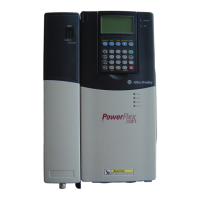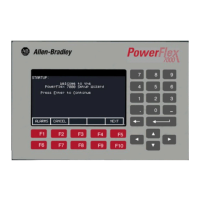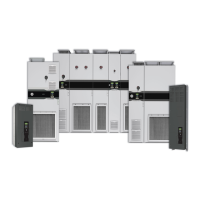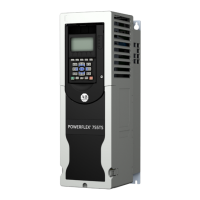C-2 Application Notes
The lifting/torque proving feature of the PowerFlex 700 is intended for
applications where proper coordination between motor control and a
mechanical brake is required. Prior to releasing a mechanical brake, the
drive will check motor output phase continuity and verify proper motor
control (torque proving). The drive will also verify that the mechanical
brake has control of the load prior to releasing drive control (brake
proving). After the drive sets the brake, motor movement is monitored to
ensure the brakes ability to hold the load.
Lifting Application functionality includes:
• Torque Proving (includes flux up and last torque measurement).
• Brake Proving (includes mode to slowly lower load if brake slips/
fails).
• Float Capability
• Micro-Positioning
• Fast Stop
• Speed Deviation Fault, Output Phase Loss Fault, Encoder Loss Fault.
The Lifting/Torque Proving feature is only available in Vector firmware
versions 3.xxx and later. It is intended to operate in the FVC Vector
Control mode (see [Motor Cntl Sel], parameter 053) with an encoder.
Motor movement is monitored through the encoder feedback which
excludes the other feedback modes from being used.
Lifting/Torque Proving Manual Start Up
It is possible to use the Assisted Start Up (see page 2-3) to tune the
motor. However, it is recommended that the motor be disconnected from
the hoist/crane equipment during the routine. If this is not possible, refer
to steps 1
through 12 on the following pages.
Lifting/Torque Proving
!
ATTENTION: Loss of control in suspended load applications can
cause personal injury and/or equipment damage. Loads must always be
controlled by the drive or a mechanical brake. Parameters 600-611 are
designed for lifting/torque proving applications. It is the responsibility
of the engineer and/or end user to configure drive parameters, test any
lifting functionality and meet safety requirements in accordance with
all applicable codes and standards.
